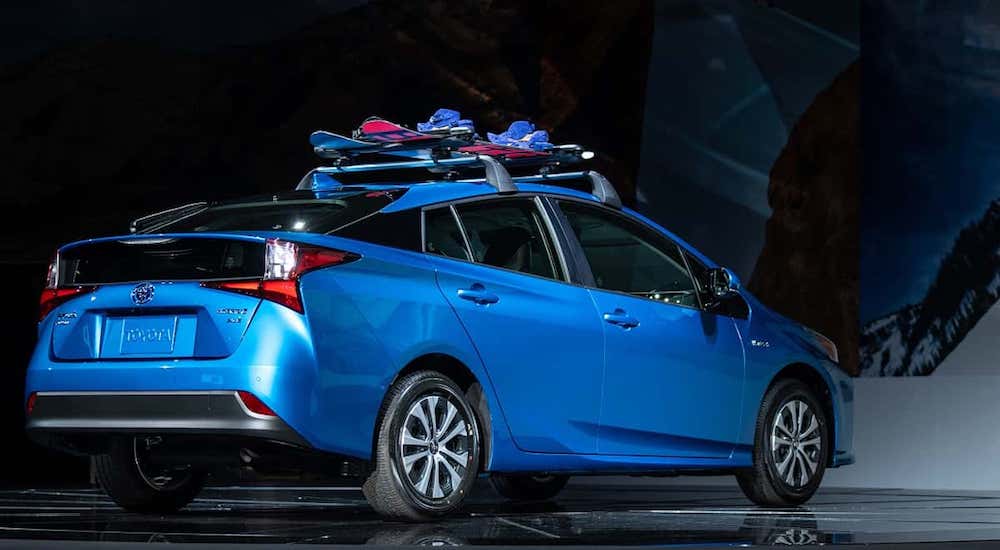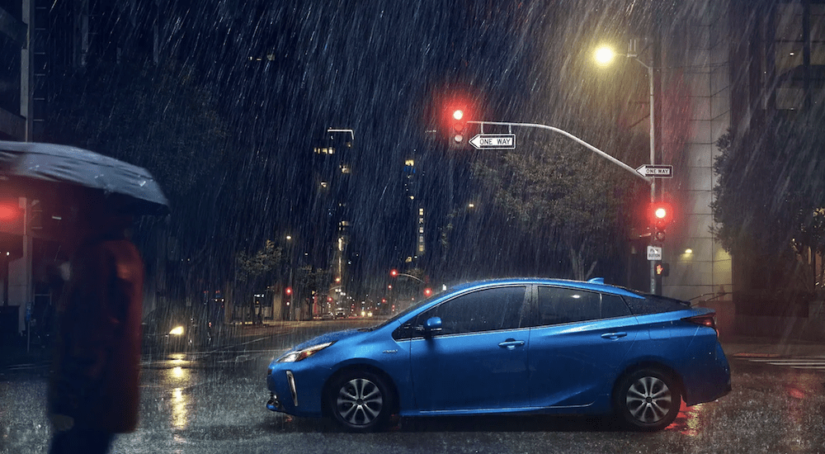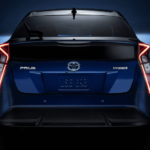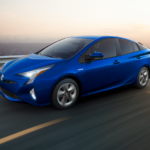If we were to prepare a Venn diagram of (i) current auto news and (ii) Christmas Lists to Santa, one might imagine the overlap consisting of ridiculous commercials featuring upper middle-class spouses buying new luxury vehicles as a surprise for one another, without the other’s knowledge (or any discussion).
That said, it would appear that Toyota has been checking the wish lists of eco-conscious drivers, with the intention of granting them everything that they’re looking for in terms of all-season, all-terrain capability. And since one is unlikely to form a natural correlation between the ever #woke Prius and versatile drivability, the news of 2019’s new offering certainly counts as a headline worth paying some attention to.
While no-one is expecting the 2019 Prius to be some kind of “Master of the Off-Road” conquering all unexplored terrain in its path, we’re sure that drivers in some regions and seasonal climates would love to balance their valued fuel economy with a little more confidence on snowy roads. And in that sense Toyota appears to be playing to both their own strengths and that of the Prius by focusing on the singular goal of giving those customers what they need (without trying to ‘dress it up’ as anything more). But let’s not get ahead of ourselves.
2018 AWD Picks
As 2018 wound down, a wide array of makes and models found their way onto lists of the most highly-regarded AWD offerings. From predictable inclusions like the Subaru Outback, Impreza, Legacy and Crosstrek to practical inclusions such as the Lincoln MKZ, Ford Taurus, Ford Fusion and Chrysler 200 there were plenty of non-SUVs with their hat in the ring. Hell, even the Mini Cooper and AWD variants of the Dodge Charger found their way onto the list. That said, the vast majority of these offer little in the way of fuel economy. Thus, it becomes easy to see why the Prius, a pioneer in all-things hybrid, stood as a perfect template for implementation.
2019 Toyota Prius
For 2019, Toyota has decided to refine it’s trim levels in the use of “grade labels”, retiring the numbered trim levels which had been previously used. Available for 2019 will be the L, Eco, LE, XLE and Limited with the option of AWD-e included for both the midrange LE and XLE trims.
Getting the superficial out of the way, the fourth-generation Prius benefits from a fresh styling across all trim levels. Always distinctive (and even somewhat divisive) Toyota has determined to bridge the gap between the traditional Prius, and the Prius Prime plug-in. This includes adjustments to the shape and placement of both headlights and taillights, as well as updates to the fascia which houses them. The change also includes restyled front and rear bumpers, a different rear hatch the new options in terms of available exterior colors and wheel designs.
While the overall appearance still remains distinctive from the Prime, the result is a cleaner look which eliminates the ‘downward dangle’ which previous models had been burdened with. All in all, it seems a little more sporty, a little more aggressive (and we like it, just fine). But aesthetics aside, you’re probably interested in hearing more about the AWD.
Prius All-Wheel Drive
The AWD-e system, employed in the all-wheel drive Prius, powers its rear wheels using a rear-mounted electric motor. There is no front-to-rear driveshaft, center differential, creating a reduction in weight. That rear motor powers the wheels off the line (from 0-6 mph) and operates up to 43 mph as needed, recognizing when all-wheel drive performance isn’t needed, in order to increase fuel economy. And unlike other Prius, which make use of a lithium-ion battery, the AWD utilizes a nickel-metal-hydride battery which is designed to perform better in lower temperatures. The change comes with a slight increase in battery size, but Toyota assures prospective buyers that the battery’s storage capacity is unchanged. But these features, combined with an ultra-low 0.24 drag coefficient, help the 2019 Prius to rate as one of the most efficient and aerodynamic passenger cars currently in production.
Toyota has estimated the new Prius’ fuel-economy at around 50 mpg combined, equating to a slight (2mpg) decrease from the likes of the 2019 LE, SLE and Limited and presenting a 6 point deficit against the Prius L Echo. This, of course, raises the question of whether or not drivers interested in a fuel sipper want to sacrifice mpgs for greater seasonal confidence. Toyota feels confident in both the need and demand for an AWD Prius, and are quick to remind us that it houses an identical Hybrid Synergy powertrain configuration to that of its stablemates: a 1.8-liter Atkinson I4 engine, with two electric motors paired with a continuously variable transmission. In fact, they’re so confident that they expect the AWD to account for a minimum 25% of Prius sales moving forward.
If we’re being honest, we’d have to agree with the extent of their confidence. With decades of experience driving on the wintery roads of North Central New England and no shortage of eco-warriors scattered across our locale, there’s certainly a home for the AWD Prius here. And that’s from a guy who braves winter roads in a gas-guzzling rear-wheel drive Dodge Charger…
But Wait, There’s More…
Now in its fourth-generation, the Prius is built upon Toyota New Global Architecture (TNGA) which consists of high-strength/low-weight construction, innovative fastening methods and a multi-link rear suspension to ensure a quiet, smooth ride.
But even with an understandable desire to minimize excess, there’s no shortage of technology or amenities available in the 2019 AWD-e Prius. Bluetooth-enabled, the six-speaker sound system is controllable through a touchscreen interface, compatible with smartphones for both handsfree phone use and music streaming. And the 4.2” color Multi-Information Display includes all of the Eco-centric data that an enthusiast could want. There’s even the inclusion of heads-up driver display, to increase driver safety.
And as one might expect, all 2019 Prius models include Toyota Safety Sense P technology bundle which includes (but is not limited to) Pre-Collision System with Pedestrian Detection, Lane Departure Alert and Full-Speed Range Dynamic Radar Cruise Control. And to aid pedestrian safety (with consideration to the minimal noise generated by a Prius running in all-electric mode) the Vehicle Proximity Notification System remains a valued feature, using sound to keep passers-by conscious of the vehicle’s presence.
Available Warranty Protection
Anyone interested in a 2019 AWD-e Prius (or its sibling variants) is eligible for Toyota’s basic 36-month/36,000-mile new-vehicle warranty, which applies to all components other than normal wear and maintenance. There is also a 60-month/60,000-mile powertrain warranty and a 96-month/100,000 month warranty on hybrid-related components like the HV battery, control modules and inverter with converter. This is in addition to ToyotaCare, a complimentary plan which covers normal scheduled maintenance for 2-years/25,000 miles. All in all, it’s hard to find fault in such a compelling suite of protective warranties.

Final Thoughts
While pricing has yet to be announced, it’s worth noting that the inclusion of AWD (already available in Japan) equates to an approximate difference of about $1,700 USD.
What do you think about the 2019 AWD-e Prius? Is this a well-calculated move to increase versatility in an eco-friendly offering, or some kind of misdirected cash grab? Let us know your thoughts.



